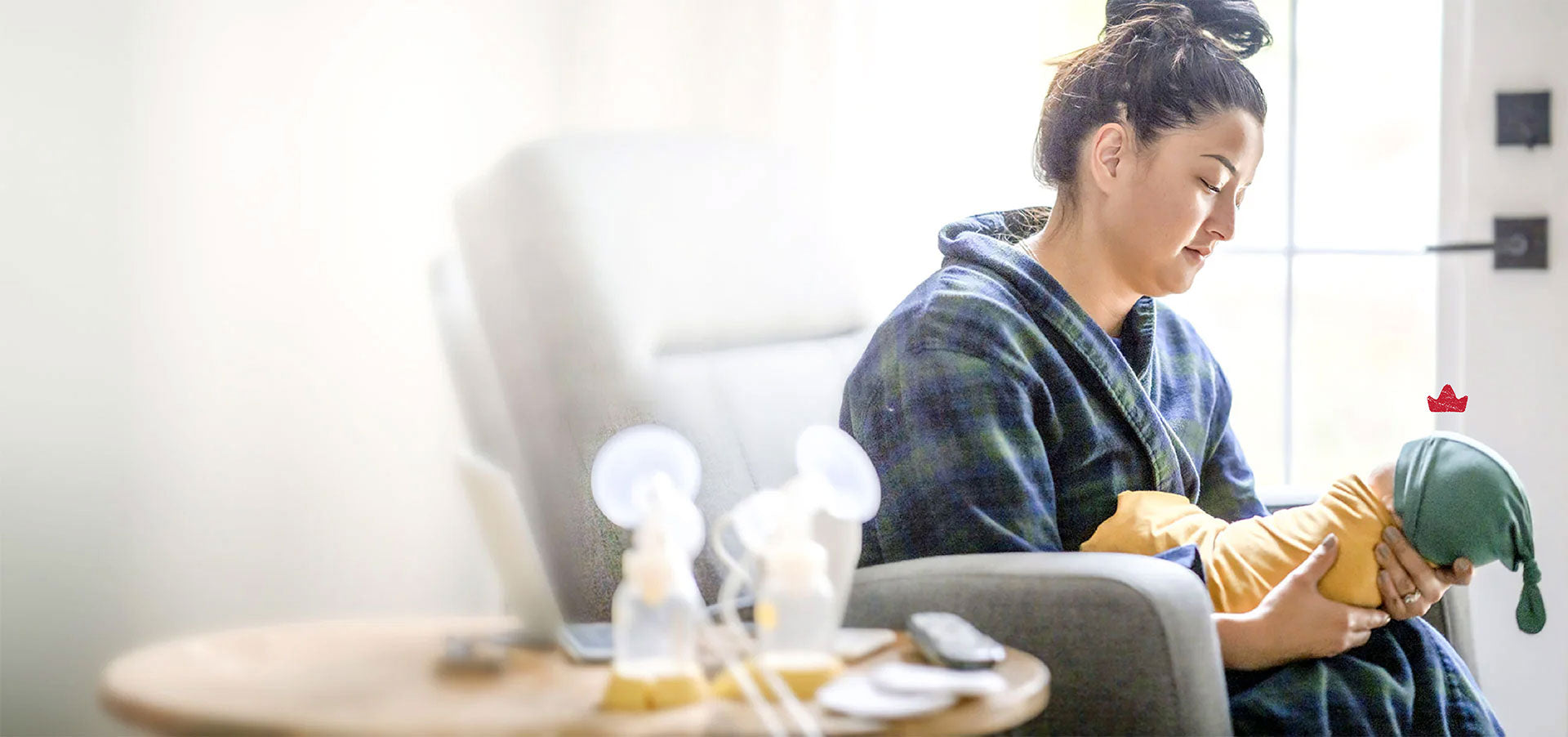
Introducing Formula Feeding to Your Infant
Get practical tips, tricks, and information to make it work for your baby.
Welcome to our supportive space for all things formula feeding, made for and in collaboration with parents and caregivers like you.
Happy Holidays | Enjoy up to 15% off with free delivery❤️

Welcome to our supportive space for all things formula feeding, made for and in collaboration with parents and caregivers like you.
And while breast milk is the gold standard for baby's nutrition, it's most important to avoid hungry tummies. Every family and milk supply is unique. So whether to breastfeed or formula feed doesn't need to be an all-or-nothing choice. It's about finding a system that nourishes your baby and works for your family.
Our infant formula is inspired by breast milk, clinically tested, and approved by Health Canada. So you can be confident our nutrients and the latest advancements in baby nutrition support your baby’s growth and development.
— From Niuriss, with Love
Sometimes, breastfeeding isn’t possible — or not possible on its own! Other times, families simply choose formula for personal reasons. The good news is there are different ways to achieve proper nutrition for your baby, like combination feeding (supplementing breast milk with formula).
This approach can aid breastfeeding by helping with some of its challenges — or smooth the transition between breast, bottle, and formula. Discover our best tips for bottle and formula feeding below while you find the system that works for you.
First, it’s important to recognize that each baby's feeding needs are unique, regardless of whether they’re breast or bottle-fed. Newborns have small stomachs — and no single information source can precisely determine the amount or frequency of feedings each baby needs, or dictate how to handle feedings. This understanding typically comes as caregivers and babies bond and learn each other's preferences and rhythms. If you’re just getting acquainted with bottles and formula, here are some best practices to consider — courtesy of Niuriss brand's nutritionist.
Experts advise introducing formula slowly, replacing breastfeeding sessions gradually. Two common methods are:
Ready to get started?
Start by choosing the right bottle and nipple flow for your baby, and remember patience is crucial when dealing with bottle refusal:
Get tips for choosing the right bottle and nipple here:
Formula feeding quantities may depend on factors like your baby’s weight and your feeding method.
Find useful guidelines for formula feeding using our feeding guide:
Material matters: Opt for bottles made from safe and durable materials like BPA-free plastics or glass. Some babies prefer one over the other so pay attention to their response!
Anti-colic features: Select bottles with anti-colic vents or systems. These help reduce your baby's intake of air while feeding, minimizing discomfort.
Ease of cleaning: Choose bottles with a simple design that makes them easy to clean. Bottles with wide necks are often more accessible for cleaning and filling.
Size and shape: Try a few different shapes and sizes to find the one your baby prefers. Sometimes, it takes a little trial and error!
Flow rate: If your baby’s only been breastfed, we recommend starting with a wide, slow-flow nipple. Babies older than three months may become frustrated with a slow flow, though — especially if breast milk flow is faster. In that case, try a faster-flow nipple.
Material: Decide whether silicone or latex works best for your baby. Silicone tends to be more durable and is easy to clean, while latex is softer and can be more soothing.
Shape: Opt for an orthodontic or traditional shape. Some babies simply prefer one or the other, while orthodonic nipples also support proper orthodontic development, such as tooth alignment.
Bottle compatibility: Ensure that the bottle warmer and sterilizer are compatible with the bottles you've chosen. Different materials may require different heating or sterilization methods.
Ease of use: Look for a device that is easy to operate, especially during those late-night feedings.
Speed: Bottle warmers with quick heating capabilities can be a lifesaver when your little one is hungry and impatient.
Type of pump: Choose between manual and electric pumps. Electric pumps are more efficient for regular use, while manual pumps are portable and convenient for occasional use.
Adjustable suction: Opt for a pump with adjustable suction levels. This allows you to tailor the pump's intensity to your comfort and your baby's needs.
Ease of cleaning: Select a pump with components that are easy to disassemble and clean. Proper hygiene is essential for your baby's health.
Portability: If you're on the go, consider a portable pump that fits your lifestyle!
Explore common questions parents have about introducing formula to their babies. Our FAQs offer comprehensive answers to ensure you feel confident and informed throughout the process.
Our goal is to offer meaningful support. That's why we're introducing a locked-in special launch price and more to safeguard against price increases for the first year.
Create your account now to claim your first can of formula free with your first order — and enter to WIN $1,000 towards a registered education savings plan!
Your cart is currently empty.
We do not ship to P.O. boxes or business addresses.